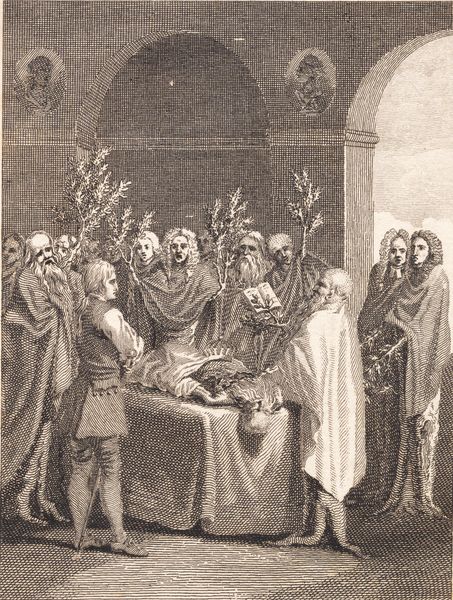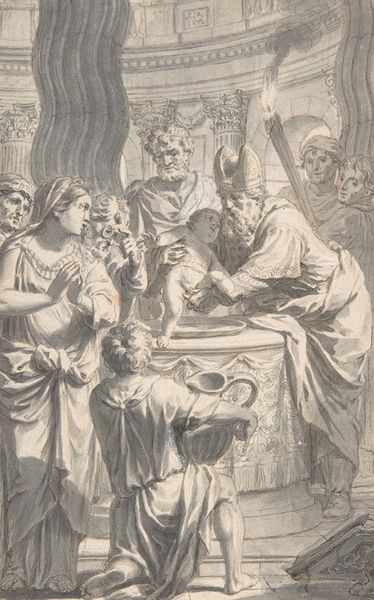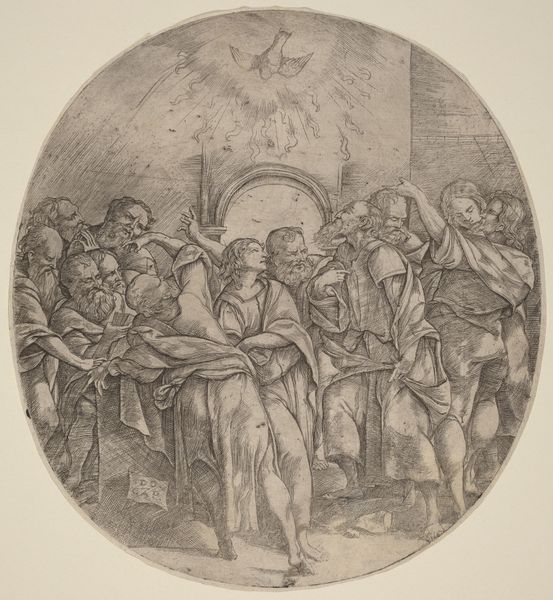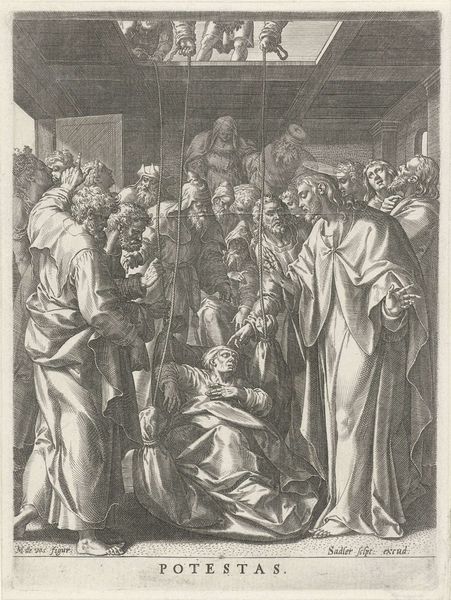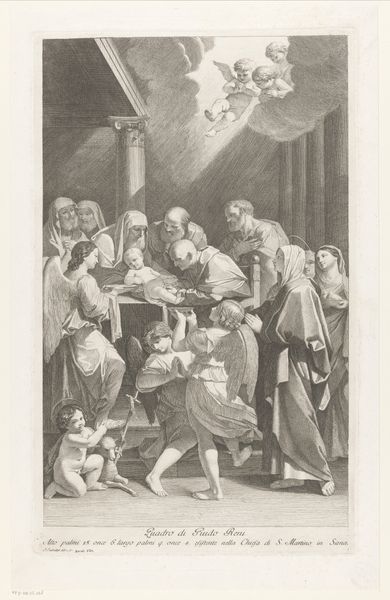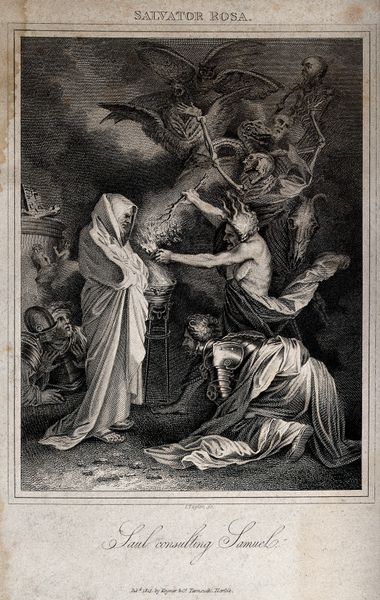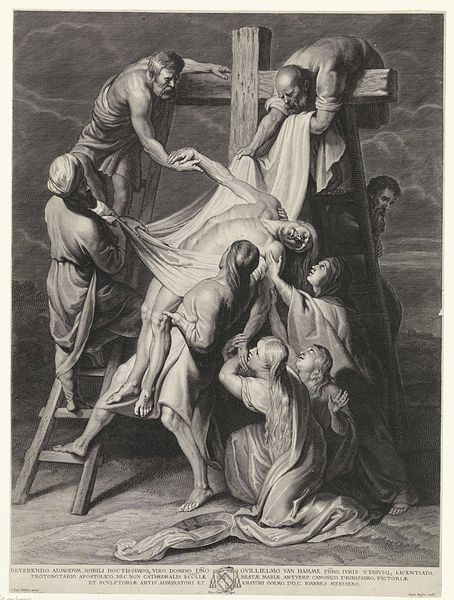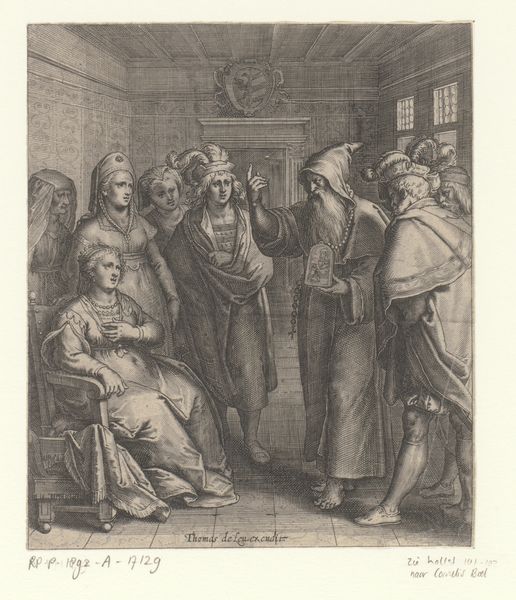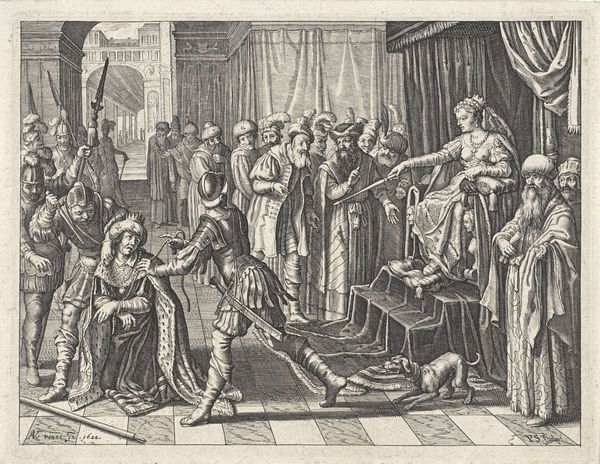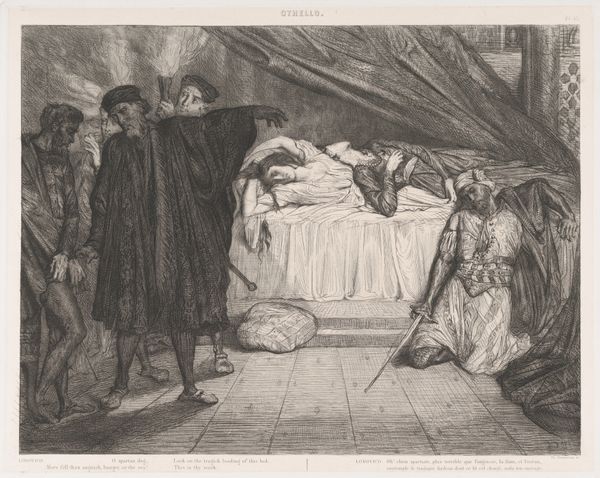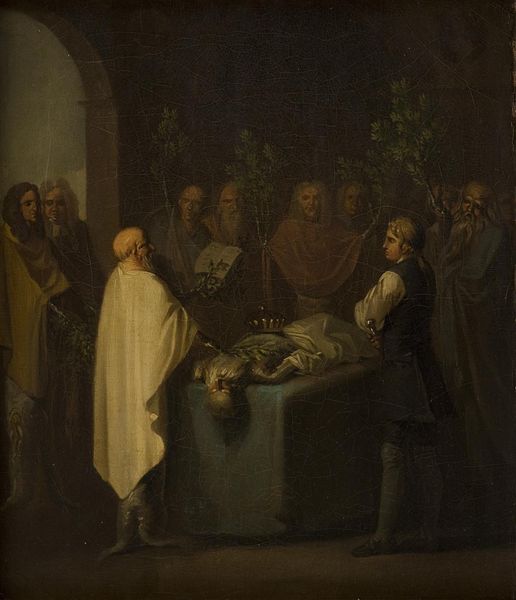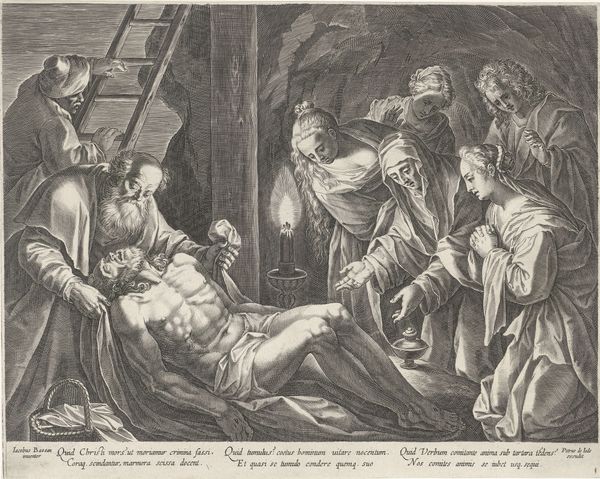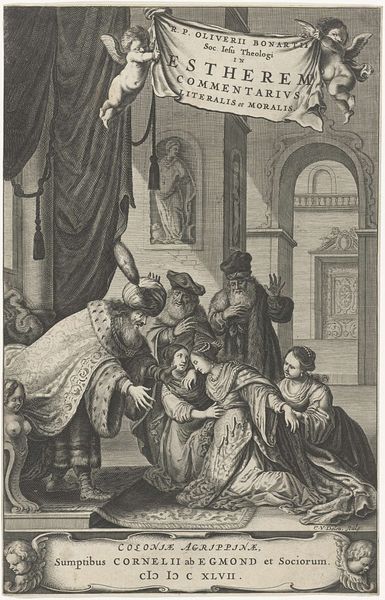
print, etching, intaglio, engraving
# print
#
etching
#
intaglio
#
history-painting
#
engraving
Dimensions: 182 mm (height) x 122 mm (width) (plademaal)
Editor: This etching and engraving from 1786-1788 by J.F. Clemens is titled "Dommen afsiges over en afdød fyrste," or "The judgment is pronounced over a deceased prince." It's quite striking, somber, and makes me wonder what kind of judgment awaits him. How do you interpret this work, especially considering its historical context? Curator: It's interesting you pick up on the somber mood. The "judgment" is key. It isn't simply a pronouncement of death but an assessment of power and legacy. Consider the late 18th century: the Enlightenment challenged the divine right of monarchs. This scene, rendered through precise intaglio, seems to depict a moment where earthly judgment encroaches upon even those who held absolute authority. Editor: So, you're saying the artist is commenting on power structures? Curator: Precisely. Notice the figures surrounding the prince. Who are they? Are they representatives of the people, offering a check on unchecked power, even in death? What symbolism do you find within the sprigs being carried by several characters? Are they symbols of justice, judgement, or power? Editor: They could be symbols of triumph, but maybe here they signal a more complex form of vindication or...perhaps absolution? It is interesting to note they all are surrounding a person who can no longer be impacted by it, but this also can serve as an example for the living, in theory. Curator: That's astute. Consider this work as a reflection on accountability, particularly for rulers. Does it imply a call for a more just, equitable society where even the powerful are held responsible? The historical moment—on the cusp of revolutions—gives the image added potency. Editor: So, beyond the immediate scene, it's prompting us to think about the responsibilities of leadership and the potential for judgment beyond the grave. Curator: Exactly. It highlights a pivotal shift in societal values, a demand for ethical governance and the questioning of inherited privilege. Even today, it's a stark reminder of how we evaluate power. Editor: This makes me see it as a powerful indictment of unchecked authority. I appreciate the historical context illuminating the artist’s message and intention. Curator: And I believe looking closer at artwork will help continue this conversation, Editor. It's art like this which creates these wonderful entry points into deeper reflection of current power paradigms.
Comments
No comments
Be the first to comment and join the conversation on the ultimate creative platform.
